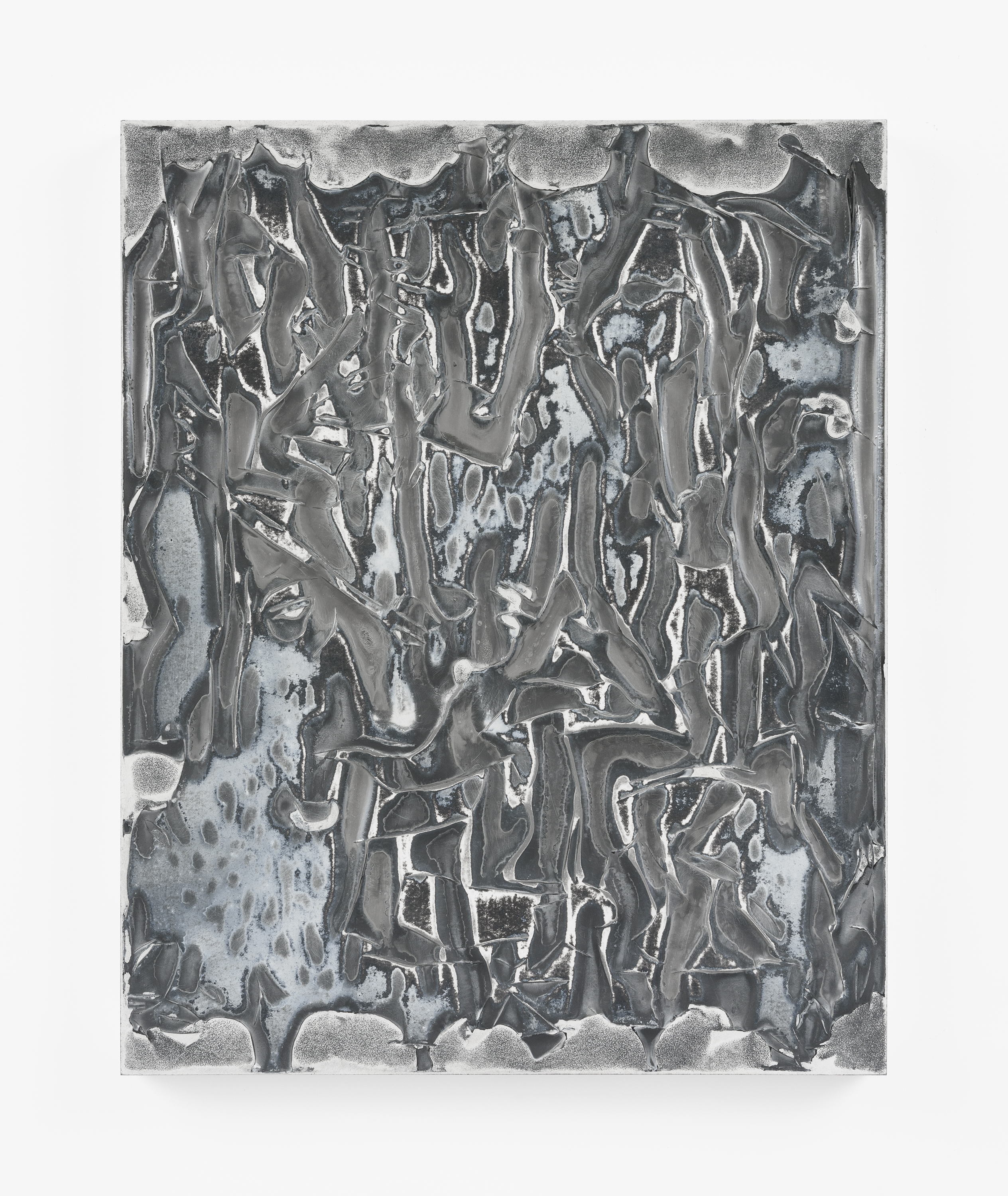I Thought of Hiding Under My Bed, but I'd Rather Be Hiding Out Here With All of You
2020
Toned cut gelatin silver print embedded in plaster, enamel, graphite
20 x 16 x 1.5 in. (50.8 x 40.6 x 3.8 cm)
Collection of the Akron Art Museum
Museum Acquisition Fund
2024.4.2
© Field Studio
More Information
Jerry Birchfield has described his artistic practice as “working from a photographic point outwards.” The three works for consideration here represent perhaps his most literal realization of that description, as they began as silver gelatin prints on paper and were then extruded into three dimensions through an experimental and materially intensive process. The process is essentially the same for each work of this type. As a first step, the artist cuts into the print—an abstract image in his typical idiom—guiding his incisions to trace the most prominent shapes in the pictures. He then places the cut print face-down into a mold in the shallow shape of a slab. Birchfield often uses the measurements of standard photographic printing sizes to guide his work—in this case the dimensions 11-by-14 and 16-by-20—and in this spirit the mold for the first work of this kind was itself a standard sized picture frame. With the print in place, he pours plaster to fill the mold. The cuts in the paper allow the wet plaster to interact with the print, causing it to warp, expand, contract, and buckle unpredictably. Already a process of cause and effect is in operation—the original image informs the cuts, and the cuts inform the movement of plaster and the dimensionality of the work’s surface. Hence, Birchfield describes the resulting 1.5-inch depth as already both a pictorial space and a material space. Next, the photo-plaster combination is removed from the mold and placed face-up so that the low points in its surface can be flooded with enamel paint with a sponge brush. Birchfield adds enough enamel to fill all of these valleys, re-leveling the surface of the object. He then leaves the enamel to seep in and dry over the course of multiple days, allowing the valleys to reemerge. In another pointedly mechanical and unintentional application, he then treats the entire surface with a layer of graphite. Following this, the entire surface is burnished, and the graphite and burnishing result in the metallic qualities visible in many of these works. Birchfield might stop at this point, or he might sand and excavate further before considering a work to be completed. Ultimately, some of the original photographic print will remain visible on the work’s surface, providing color through the chemicals used in its toning and texture through Birchfield’s incisions. While many elements of this process are done by rule and without judgment (using an arbitrarily sized mold, filling with enamel to fully re-level the surface, applying graphite evenly and without intention), the decision to do more processing or to stop is intuitive and aesthetic. Sometimes the artist will make this decision immediately, or sometimes he will let a work hang on his wall for a while before proceeding. Some results may even fall outside of the scope of his interest (rather than being discarded, these will be recycled into something else, even if that means they may be pulverized or otherwise presented in a totally different way). Birchfield describes the avoidance of control and intention as helpful: “When I try to make a painting it gets odd… These strict procedures generate the result.” At the same time, it is impossible to act while keeping intuition entirely at bay: “In the end, I end up being a fussy artist about it anyway.” Exploring the back-and-forth between these poles uncovers contradictions and conflicts, and the process is rewarding as a result: “At the end of the day it’s about creating image-objects that acknowledge the layers of their operation. These things are there to ask questions about the entire engagement, so however I do that, that’s okay.” The resulting “image-objects,” as Birchfield calls them, are visually and conceptually engaging for their mixture of these qualities. Because they are formed by uncontrolled, physical processes, they take on qualities of other natural processes—they often look like flowing liquid, glinting ice, or crumbling rock. Because they are formed through a specific and tightly-controlled process, they take on an overall coherence—of scale and of ranges of color and texture, especially when they are presented in a group. Because they are part of Birchfield’s broader practice, the works connect to photography and image making through additional, conceptual dimensions—the use of plaster suggests an extension from the wall (Birchfield often activates frames, pedestals, and other elements that surround artwork) as well as a relationship to photographic “fixing” (the process of stopping the development of a chemical negative or darkroom print) by similarly making a dimensional image solid and durable (Birchfield has elsewhere even related his use of plaster to casts and the healing of broken bones).

